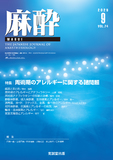Japanese
English
- 有料閲覧
- Abstract 文献概要
- 1ページ目 Look Inside
- 参考文献 Reference
要旨
手術待機中にdipeptidyl peptidase-4(DPP-4)阻害薬関連水疱性類天疱瘡を発症し,手術施行時期の決定に苦慮した1症例を経験した。DPP-4阻害薬関連水疱性類天疱瘡は,通常の水疱性類天疱瘡や薬疹とは病態が異なり,DPP-4阻害薬の中止のみで軽快するのか,さらなる治療が必要かを見極めて手術時期を決定することが重要であると考えられた。
We report a case of bullous pemphigoid that developed as an adverse effect of treatment with a DPP-4 inhibitor. The various DPP-4 inhibitors are used to treat type 2 diabetes. The patient, a male in his seventies, was scheduled for surgery but the development of the bullous pemphigoid presented significant challenges in determining both the appropriate treatment approach and the optimal timing for the surgical procedure.
The pathophysiology of DPP-4 inhibitor-associated bullous pemphigoid differs from those of both conventional autoimmune bullous pemphigoid and other drug-induced skin eruptions. The key clinical challenge in the present patient’s case was determining whether the discontinuation of the DPP-4 inhibitor alone would lead to symptom resolution or whether additional treatment would be necessary, which was crucial for establishing the appropriate timing for the patient’s surgery. In this case, the symptoms resolved 2 weeks after discontinuation of the DPP-4 inhibitor. No additional treatment was needed, and surgery was performed as scheduled. When DPP-4i BP develops, it is important to assess the severity of DPP-4i BP 10-14 days after discontinuation of DPP-4i to determine the timing of surgery.

Copyright © 2025 KOKUSEIDO CO., LTD. All Rights Reserved.


